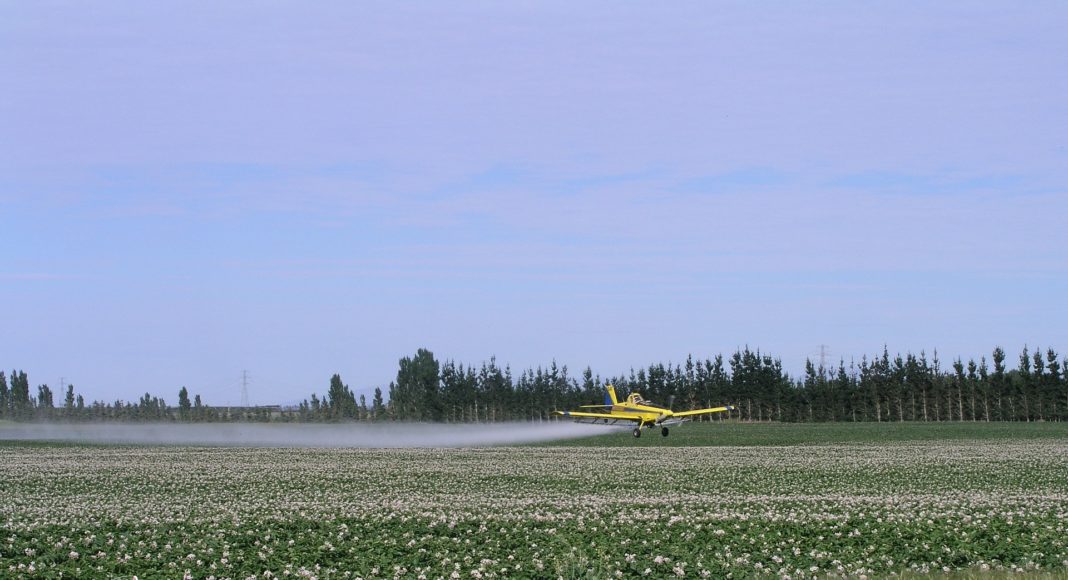Canadian potato growers will still be able to use imidacloprid for foliar applications but in-furrow application has been cancelled, Health Canada’s Pest Management Regulatory Agency (PMRA) says in a published decisionon May 19.
The decision stated an evaluation of the human health risks associated with imidacloprid concluded all uses are acceptable for continued registration with revised label instructions. Imidacloprid is a broad spectrum neonicotinoid insecticide used to manage insects on a large number of agricultural crops, ornamental plants, trees, turf, indoor and outdoor structural sites. Imidacloprid products are applied using ground, aerial and seed treatment equipment, tree injection applicators and granular spreaders, the decision notes.
The decision stated in-furrow application root and tuber vegetables, including potatoes, was cancelled. This was due to the maximum application rate being reduced to 100 g a.i./ha which exceeded the maximum allowable rate due to row spacing, the decision says. The decision also stated potato foliar applications have been reduced to one per season.
Overall cancelled imidacloprid uses are as follows:
- Seed treatment for corn flea beetle on field and sweet corn. The rate for this pest exceeds the maximum allowable rate of 13 g a.i./80 000 seeds for field corn and 67.2 g a.i./100 kg seed for sweet corn.
- Seed treatment — direct field seeding of brassica vegetables (such as broccoli and cabbage) and leafy vegetables (such as lettuce) and listed pests. Continued registration for transplants only.
- In-furrow application on brassica, leafy, and root and tuber vegetables (including potato) and listed pests. The use on these crops is cancelled due to the maximum application rate being reduced to 100 g a.i./ha or because the maximum allowable rate will be exceeded based on the row spacing for these crops.
- In-furrow application on tobacco and listed pests.
- Soil drench application on brassica, leafy, and root and tuber vegetables (including potato, excluding sugar beet) and listed pests. The use on these crops is cancelled due to the maximum application rate being reduced to 86.6 g a.i./ha or because the maximum allowable rate will be exceeded based on the row spacing for these crops.
- Field application of tray plug drench application on leafy vegetables and listed pests. The use on these crops is cancelled due to the maximum application rate being reduced to 86.6 g a.i./ha.
- Foliar and granular application on turf and listed pests.
- Foliar application on lowbush blueberry and listed pests.
Overall changes to imidacloprid uses are as follows:
- Field corn seed treatment — Maximum application rate reduced to 13 g a.i./80 000 seeds.
- Sweet corn seed treatment — Maximum application rate reduced to 67.2 g a.i./100 kg seed.
- Soybean seed treatment — Maximum application rate reduced to 62.5 g a.i./100 kg seed.
- Vegetable seed treatment — Lettuce, broccoli and cabbage seed treatment restricted to crops grown or started (transplant) in greenhouse (no direct seeding to fields permitted).
- Vegetable, potato, legume (except soybean) and tobacco foliar applications — Maximum number of applications reduced to one per season.
- Soybean foliar application — Maximum number of applications reduced to one (1) per season, and maximum application rate reduced to 24.4 g a.i./ha.
- Spray buffer zones required to mitigate risks from spray drift.
- Standard label statements to inform users of the potential toxic effects to sensitive biota.
- Additional restrictions for use of treated seed, including revisions to seed disposal instructions and the prohibition of broadcast seeding of treated seed.
The decision was reached following environmental risk assessments over the past few years, and came following an earlier decision on clothianidin and thiamethoxam which found use was still allowed with revised label instructions. The review process of these products, all classified as neonics, began in 2016. At the time the Canadian government proposed a phase-out of all agricultural uses of imidacloprid, as the insecticides were accumulating in ponds, creeks and other water bodies near agricultural land. Two years later the same phase-out recommendation was made for thiamethoxam and clothianidin. The European Union has previously banned neonic use.
To comply with this decision, the required amendments, mitigation measures and label updates must be implemented on all product labels no later than 24 months after May 19, 2021, the decision notes.











